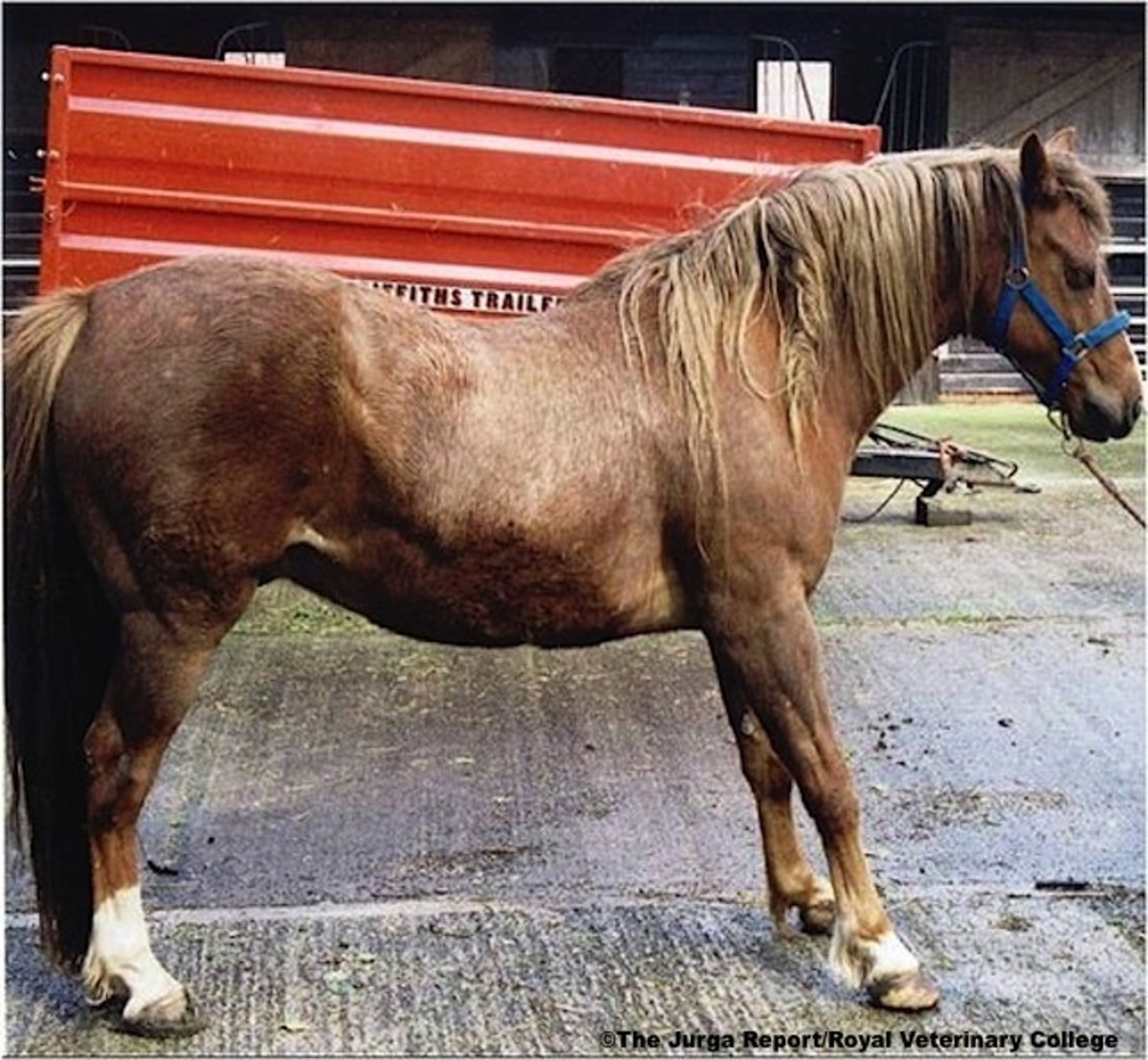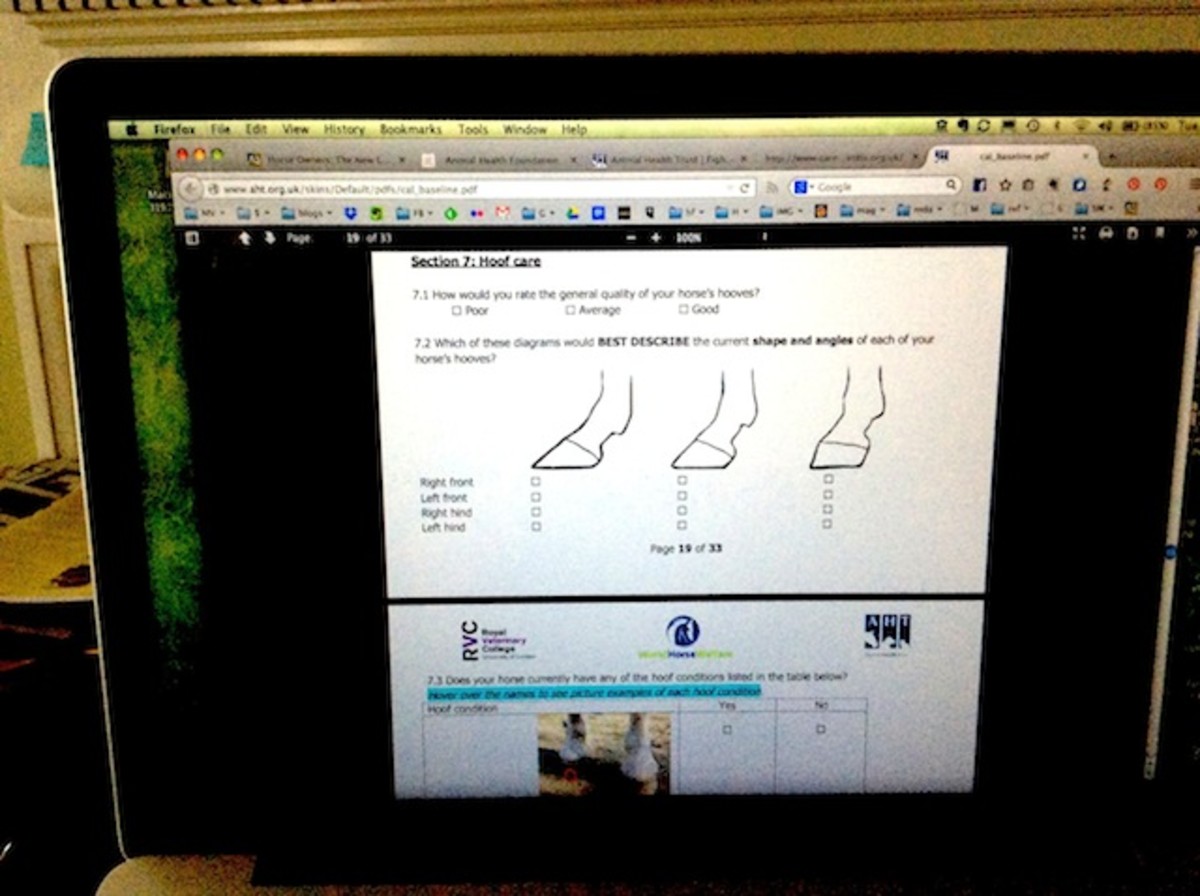Horse Owners: The New Laminitis Researchers
- March 10, 2017
- ⎯ Fran Jurga

They may not wear lab coats, and they may not have PhDs, but they’re the newest members of a global research team. Armed with their iPads and SmartPhones, they snap photos of their horses, wrap them in weigh tapes, and interview their farriers for hoof health history details.
This is power to the people, laminitis style.
Working hand in hand with universities in Australia, the United States and Great Britain through online surveys and enrollment of their horses as study subjects, owners are contributing data to the study of many different aspects of laminitis, from prevention to rehabilitation and all the way to possible genetic analysis for breed predisposition.
From Queensland University of Technology in Australia to the University of Minnesota in the USA to the Royal Veterinary College in the United Kingdom, horse owners are often on the “most wanted” list when new studies are designed. Researchers need to know more about the horses that do and don’t get laminitis, and they want to track the real life conditions affecting horses in your barn.
Where did the idea for collaboration with horse owners originate? Not too long ago, veterinary colleges maintained herds of horses that could be utilized for research purposes and had the luxury of selecting from donated horses of all ages, genders, breeds and conditions. But trying to select a horse that might be at risk for a disease would mean housing, supporting, and tracking that horse for years.
At the same time, vet schools were developing ambulatory practices that had outreach to the horseowner communities surrounding the universities, and rapport between vet schools and clients showed the need for education about underlying endocrine disorders like Equine Metabolic Syndrome (EMS) and Pituitary pars intermedia dysfunction (“PPID” or Equine Cushing’s Disease) that can be associated with laminitis.
But it wasn’t only horse owners who needed education; veterinarians needed it, too. And researchers had work to do to develop hormonal tests and protocols that would be easily applicable to the burgeoning number of cases being seen.
They needed data. Data was in the field. In this case, it was literally in the field, and probably wearing a grazing muzzle and some type of therapeutic shoes for laminitis recovery.
Field data collection is an expensive line item in a researcher’s budget; why not ask horse owners to be part of the team, since online surveys were accessible to anyone with a computer and Internet access?
As the Internet became more sophisticated, so did the researchers’ ability to harvest data from the field. Today, the University of Minnesota is exemplary in involving horse owners in equine research, particularly in the study of Equine Metabolic Syndrome and its frequent side effect of chronic laminitis.

Australia’s Queensland University of Technology launched an ambitious study this year, which involves both the veterinarian and horse owner, who fill out separate forms on the University website. For their trouble, the horse’s endocrine testing is provided for free; Cornell University is collaborating to process the test results for US horses enrolled in the study. The horse is entered into the study in 2014 and reports back into the study when and if it suffers a relapse of laminitis.
In this way, researcher Melody DeLaat hopes to track a large number of horses through their post-laminitis lives. The study was promoted in the US by the Animal Health Foundation, which funded DeLaat’s previous research, and the International Equine Conference on Laminitis and Diseases of the Foot, where she has been a speaker.
The most ambitious and newest study is a collaboration between England’s Royal Veterinary College, World Horse Welfare and the Animal Health Trust. Both an education project and a research project, “Care About Laminitis” is seeking to enroll 3000 horses in England through their wired-in owners. Study director Danica Pollard is seeking both healthy horses and horses with a history of laminitis. These horses’ owners will fill out monthly diary-like surveys on general information, turnout and grazing, stabling, feeding, exercise, transport, hoof care, and health management/history.
Publication privileges: will owners ever see their research?
What happens to the research results from the data collected? Previously, owners involved in field data collection complained they often never heard from researchers after submitting data, or knew if the research was compiled or published. Often, publication is dependent on a grant’s terms with funding agencies. The Minnesota EMS study, for instance, was funded by the US Department of Agriculture, Morris Animal Foundation and Pfizer Animal Health.
Chances are, research on all these studies is published in scientific journals that horse owners will never see. They might be able to see an abstract of the paper online, but reading the research that they participated in may require a fee of $35 to $75 to access the full paper.
The same frustration is experienced by owners who donate money–even large sums of money–to equine research. They can’t read the results, even when their name is in the acknowledgments. Thoughtful researchers and university development staff will usually make sure that donors receive a hard copy of a paper, but that usually comes long after the Internet version is announced and made available–to those who have password access, that is.
The Grayson-Jockey Club Research Foundation (GJCRF) realized the dilemma of its donors and decided to do something about not being able to share Internet access without paying hundreds of dollars for web access to scholarly websites. As a result, on August 26, the Foundation announced that all research it has funded is now available free of charge if it was published by the Equine Veterinary Journal.
To access the complete list of articles available on GJCRF funded projects, just go to the Equine Veterinary Journal home page and type “Grayson Jockey Club Research” in the “Search” box on the right hand side, and change the top drop-down criteria to ALL CONTENT. “All free publications are noted and a pdf can be accessed for download upon selecting that article,” said Executive Director Ed Bowen in a message announcing the new access.
Some funding organizations, particularly US and British government agencies, stipulate that research they fund must be published in Open Access journals, which allow the public to view the research online. Somewhere in the middle, journals are offering select articles on an Open Access basis, while others require a subscription or password access.
Horse owners should ask before committing to collect data if they will be allowed to see the results.
Sometimes data can spend years in the collection stages, or it may never be published in a journal at all. Typically, the research is presented at symposia, often by a student. Research collected for product development may be kept private.
The University of Minnesota offers webinars to horseowners on Equine Metabolic Syndrome and related horse management issues, and has a library of reference material on its website about EMS.
Horse owners who volunteer to collect data on their horses should do it for all the right reasons: to help add to the body of knowledge about laminitis and how to treat or prevent it. This latest stage in the evolution of laminitis research may also see an evolution of the once-isolated field data collector to a linked-up participant in ongoing efforts that may make all the difference in the world to our horses.
To learn more:
White House unveils long-awaited public access policy (2013)
Review of past laminitis surveys and statistics in Great Britain





